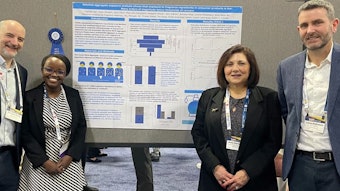Verbal Identification. Our first work on this problem of the ability of human observers to identify odors verbally began in the late 1950s. The mathematical information theory developed by communication engineers then played an important role in sensory psychology (Engen, 1961). Human sensory ability was largely viewed as a processing device transmitting information about the energies in the environment via the various sense modalities and encoding it into memory. Memory capacity could then be considered the main factor limiting the sensory ability of the observer, One advantage of this approach is that different modalities can be compared on the basis of their information transmission capacity despite the fact that difIerent kinds of energy are involved. Miller (1956) summarized this research and concluded that as far as unidimensional energies or stimuli, such as the pitch of sound varying only in frequency, were concerned, man was able to identify seven different levels with. out confusion regarding their rank order from low to high.
Our first effort in such information measurement in odor intensity showed that an average intelligent observer without any special training or experience could identify only three different levels or concentrations presented separately, Only a highly practiced observer could reach a maximum near the low level of five, Miller’s “magic number,” That is, if more than five levels were presented one at a time to be identified by the rank order of its odor intensity, the observer would make errors by confusing tbe intensity ranks, The potential importance of experience, a variable of special interest in the case of perfumers and flavorists, remains an unsettled issue though a few papers have provided valuable information (Jones, 1968; Desor and Beauchamp, 1974). Our research has been directed toward the typical observer, or the average healthy human being, and norms for the textbooks concerned with the olfactory system rather than with training or selection of expert noses.










